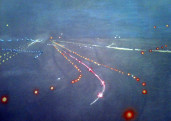
by James Tadd Adcox
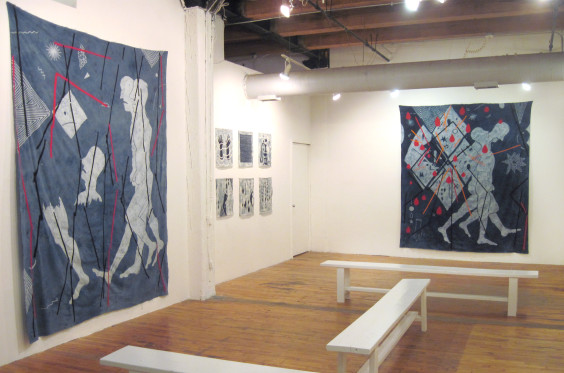
Jovencio de la Paz spent seven years in Chicago, where he earned his BFA at the School of the Art Institute of Chicago and then joined the faculty there in the Fiber and Material Studies Department. Now living in Eugene, Oregon, he offers insight into the differences between the art scene in Chicago and the Pacific Northwest, as well as the inspiration he gleans from teaching art and his involvement with Craft Mystery Cult. Some of his works from “Monuments” are featured in our most recent issue, MAKE 16 Archive. He will have an upcoming solo show in May at 4th Ward Projects in Hyde Park in Chicago.
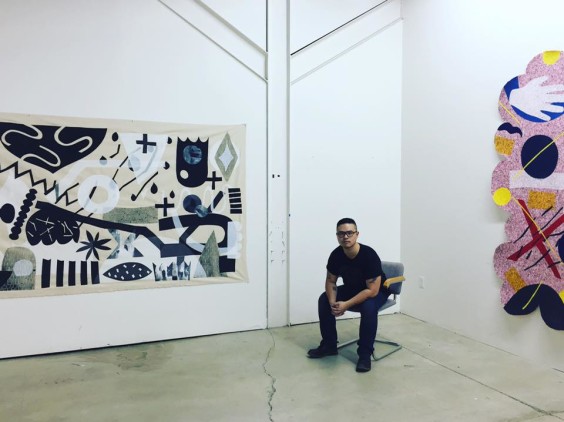
Alessandra Stamper: You recently taught in the Fiber and Material Studies Department at SAIC, where you also earned your BFA. Do you find that teaching can be an integral part of making art? Did your experience as a student in Chicago or teaching at SAIC influence your practice or inspire your process in any way?
Jovencio de la Paz: For me, teaching art is rooted in the ability to perceive and nurture the visions of others, even when those visions are in direct opposition to my own ideologies. To do this, I have found I must constantly suspend what I consider to be the limits of the possible, the acceptable, or the relevant in art making. I am in profound debt to my students for constantly placing me on this kind of volatile ground, and I do all I can to ensure that for my students, this feeling is mutual. I think many non-teaching artists I know work very hard to seek out situations where their preconceptions are challenged. But as a teacher, I have a wonderful, daily, community of challengers in my life. In the end, I don’t think teaching is integral to my art-making, but it is an incredible boon for which I am grateful.
As a student at the School of the Art Institute of Chicago, I was lucky to have a variety of mentors, each of whom had very different kinds of practices. Over time I have realized that they were each unique examples of the ways in which an artist might exist in the world, none more valid than the other. I was also lucky because these mentors were excited about the meaningful lesson encapsulated in the eventual moment when a student has to reject their mentors and find their own way. It has instilled in my thinking a desire to be unsatisfied with models of practice that are known variables, especially the ones I have created for myself. It has made my practice somewhat nomadic, and I find I am most happy in the studio when I am mobile both in my thinking and my material output.
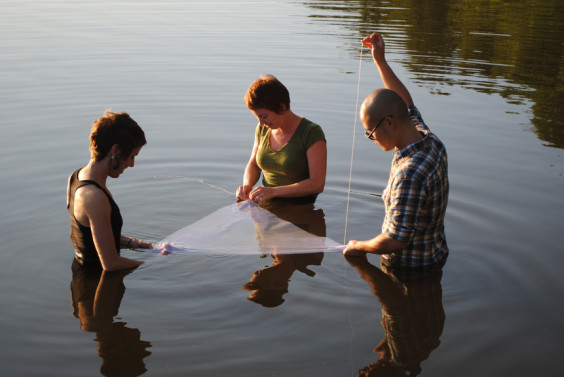
AS: I’m interested in the focus on time and human interaction in your work. Could you talk about your exploration of these topics and the works in which they are most present?
JDLP: The social and historical metaphors in cloth are key to all my activities, and the core of my formal training as an artist is in the production of textiles. At the School of the Art Institute of Chicago my focus was on weaving, sewing, and textile-printing, and in each of these ways of making there is a heightened sensitivity to time, process, repetition, and materiality. But when I began my graduate work at the Cranbrook Academy of Art’s Department of Fiber, I arrived upon this moment where I was compelled to give all this up. I went through an unplanned period of rejection, where I found myself cleansing my practice of the materiality I had, up to that point, found integral to my identity. I put away the loom, and packed up all my yarn and sewing needles, and I began exploring performance, video, sound, and writing. I don’t think this was an absolute rejection of materiality though. I think it was an endeavor to let go of processes I had become very comfortable with in order to try and have a clearer focus on something vital inside the making of cloth that might not be exclusively contained in the physicality of cloth. What I was left with then was time as a material, interaction as process, and language as a way of documenting the flux of these activities.
I was exploring durational performances that often lasted from dawn until dusk, where I and others would focus on the repetition of simple tasks like playing a single note on a piano, or tying tiny lengths of thread together to make a longer length. For me, touch became more urgent in these gestures than it ever was in the haptic making of textile, or at the very least, I was able to arrive at the sense of touch in a way that had been long obscured by my dedication and obsession with making cloth itself. I was deeply inspired by choreographer Pina Bausch, and the idea of working collaboratively to generate dance and movement around the idea of repetition. I think this was a profoundly productive period of time for me, and though I have come back to working with materiality, the process of giving up the skills I felt I understood has left a lasting impression on me. In having allowed myself to step away from the ways of making I had imagined were absolutely necessary to my reality in the studio, I found a limitlessness and an energy that has become the atmosphere I hope surrounds whatever it is I choose to make now.
There is one performance in particular called “Sewing the Surface of the Water,” which I think encompasses so much of this period of my life. It is a performance I made with my collaborative enterprise Craft Mystery Cult. It is a performance that happened spontaneously, with almost no planning, and with almost no pre-conceptions of content. In the days and moments before we made this performance, we allowed ourselves to focus on generating an environment for ourselves, an environment in which the urgent language of productivity was replaced by a more fluid process of being together, spending time working in and exploring the landscape, and speaking to each other with the careful suspension of judgement. I believe this spirit of interaction and temporality are both very much in this particular work.
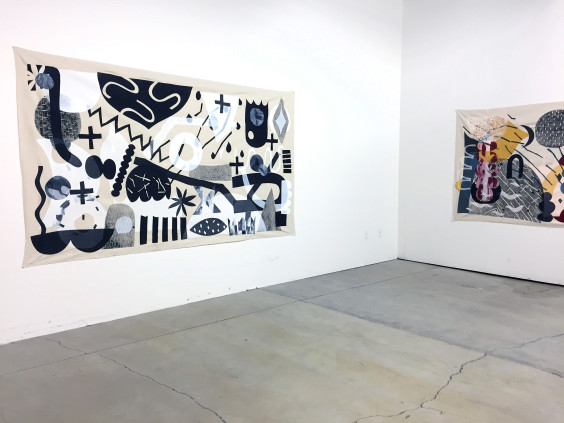
AS: Having lived and worked in Chicago, what is your perspective on the art world here, as opposed to say, the Pacific Northwest, where you live now, and its openness to emerging artists?
JDLP: More than any other place I have lived, I believe I have felt a kind of authentic camaraderie amongst the artists I have met in Chicago – one based in humility, criticality, and a desire to work above all else. Yet it is also in this city I have become very aware of the complexities and shortcomings of “community” as a notion. To speak singularly of “an art world” in Chicago is akin to saying that Chicago is a single neighborhood. In fact there are many vibrant art worlds in Chicago, as in every city, and we often don’t do that great of a job at interacting with our neighbors, or even recognizing that they’re there at all. I have known many artists in the city who, after being ignored or placeless, have invented their own spaces and own worlds. With that density of microcosms, there is absolutely an ongoing struggle for space, for resources, and recognition, and there are oppositional apparatuses that work to quell or support new growth. But in Chicago, despite sometimes overwhelming adversity, I have always felt a sense that what is possible is not yet fixed.
Now I no longer live in the density of Chicago. Now that I live in Eugene, Oregon I have kind of traded my CTA pass for hiking boots and my back-porch hangouts for hills and trails. I don’t really think I am in a position yet, after being a working artist here for only a few months, to make a fair appraisal of the communities of artists around me. I will say that the artists I have met here so far have a kind of access to life and livability I have not seen everywhere. Many seem to maintain both their careers and domestic lives with equal mindfulness and satisfaction. Yes there are many fewer galleries here compared to many urban centers, and there are fewer institutions to support the very young and savvy artists that are being drawn to this part of the United States. But I am finding more and more artists who choose to live and work in the Pacific Northwest and are able to sustain really vibrant practices all across the country and beyond. It is exciting to see and believe in a place that might be able to support and nurture a balance between work, life, and career.
To speak for myself though, my work has changed dramatically by the landscape and the sense of space here. I spend quite a bit of time hiking and camping on my own, and I feel as though I am re-learning how to see the dark, and to remember how dark the dark can actually be. Being in the Pacific Northwest, I am focusing again on issues most formal, and I am remembering that in the ideas of color, form, and abstraction, there have always been issues most social, political, and urgent.
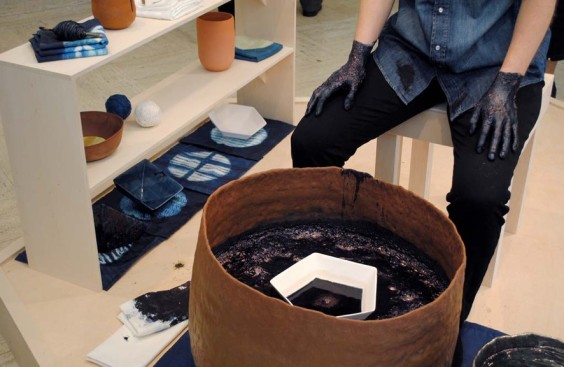
AS: You cofounded the Craft Mystery Cult. I’m fascinated by the idea that craft-making based on the sense of touch can create a perfect imagined world (if I am understanding the concept correctly). Can you talk more about this idea?
JDLP: Sonja Dahl, Stacy Jo Scott, and I established the Craft Mystery Cult in 2010, when we were studying at the Cranbrook Academy of Art and on residency at the Ox Bow School of Art in Saugatuck, Michigan. Sonja and I were studying Fiber, and Stacy Jo was studying ceramics. Looking back on it, the precision of our intent feels fuzzier, and when I look over our notes and writing from that time, it is harder for me to describe an absolute goal. But in fact, that the project might reject fixity feels closer to the heart of what I was after, then and now. I think we were each looking for an alternative space within the history of Modern Art and Design so strongly established at the Cranbrook Academy of Art, something that spoke to our interest in the mystic and highly spiritualized origins of Modernism.
I think there is something quieting about looking at inches of linen woven in Egypt 6,000 years ago, or at a fragment of a clay pot made in China 20,000 years ago, because the touch, and therefore the humanity of that maker, is transmitted across time in the surface of these things. As a crafts person, I have found there is a perfect, imagined world in the moment between thought and action. The challenge of being a physical entity though, having an imperfect and fallible body, means this perfection remains kind of unreachable beyond deep inside each of us. One of the joys of being able to make things with our hands is the lifelong endeavor of reconciling the inner world and the outer, what we hope to do and what is actually possible.
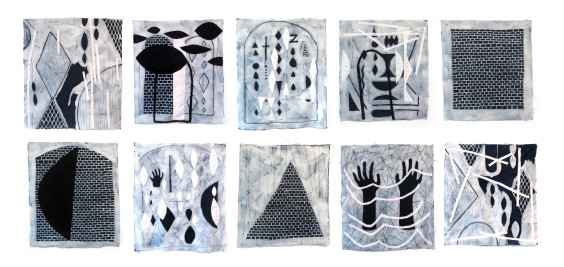
AS: Work from your Monuments series, featured in our most recent issue, Archive #16, uses the Batik method of dying textiles with natural indigo. Can you talk about the images in this series and your relationship to Batik?
JDLP: As an immigrant to the United States, I have often thought about issues of movement, transition, wandering, and notions of home. I became interested in Batik and Indigo because of their deep ties to Indonesia and Southeast Asia, and because of their highly fraught history of colonization, globalization, and forced labor. Batik is a process in which molten wax is painted or drawn onto un-dyed fabric. Because wax resists water, when the fabric is dyed, a resist image emerges. In every case, the image appears like a hole, or an absence in the cloth. For me, this technicality is heavy with meaning. Many of my batiks are attempts at framing an absence, whether a longing for distant loved ones, or the larger disappearing of oppressed people throughout history. The “Monuments” refer to headstones and memorial architecture, and they were made during yet another period in American history when young people of color seem slaughtered with inexplicable ease.
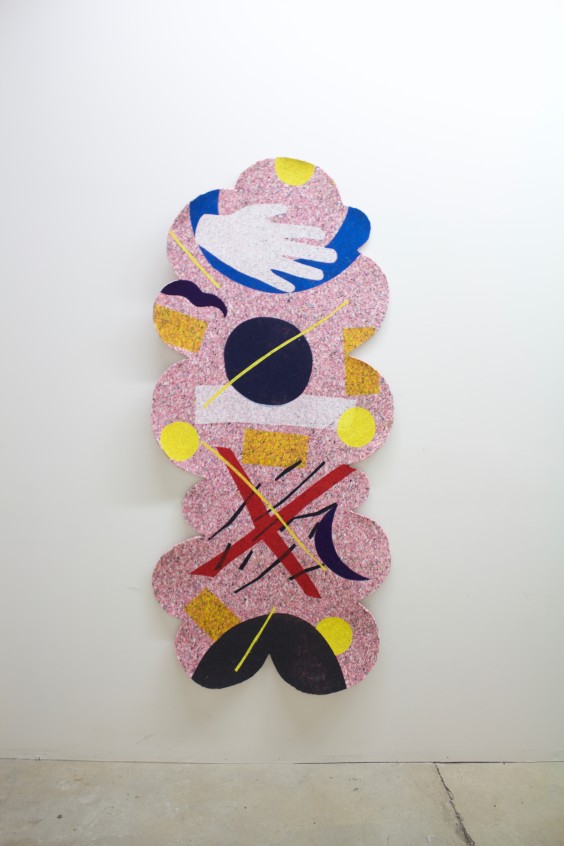
This interview took place via e-mail in January of 2016.
Jovencio de la Paz is an artist and educator living in Eugene, OR, where he is the Curricular Coordinator and a visiting assistant professor at the University of Oregon’s Art Department. His textile-based work deals with the material history of color, migration, and absence.
Alessandra Stamper received her MA at the University of Chicago where she studied Film and Art History. Her thesis explored the interplay of the gaze of the artist, the artist’s subject, and the camera. She currently lives in South Bend, IN and has worked as an Intern for MAKE Literary Magazine.















click to see who
MAKE Magazine Publisher MAKE Literary Productions Managing Editor Chamandeep Bains Assistant Managing Editor and Web Editor Kenneth Guay Fiction Editor Kamilah Foreman Nonfiction Editor Jessica Anne Poetry Editor Joel Craig Intercambio Poetry Editor Daniel Borzutzky Intercambio Prose Editor Brenda Lozano Latin American Art Portfolio Editor Alejandro Almanza Pereda Reviews Editor Mark Molloy Portfolio Art Editor Sarah Kramer Creative Director Joshua Hauth, Hauthwares Webmaster Johnathan Crawford Proofreader/Copy Editor Sarah Kramer Associate Fiction Editors LC Fiore, Jim Kourlas, Kerstin Schaars Contributing Editors Kyle Beachy, Steffi Drewes, Katie Geha, Kathleen Rooney Social Media Coordinator Jennifer De Poorter
MAKE Literary Productions, NFP Co-directors, Sarah Dodson and Joel Craig